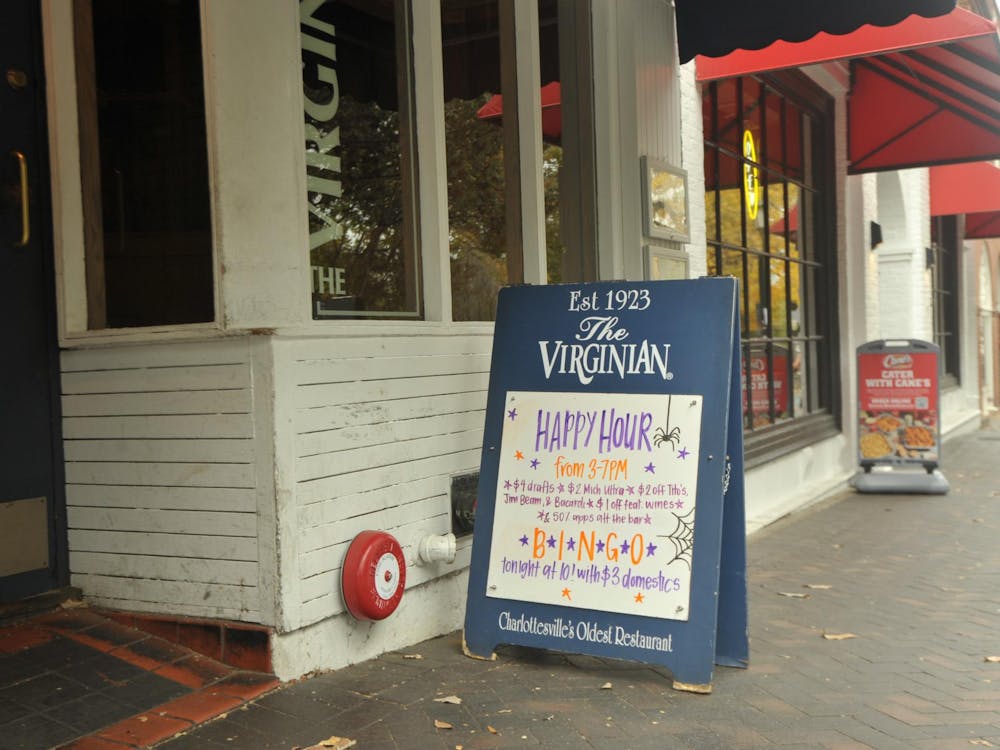The full Board of Visitors gathered in Madison Hall before Saturday's home football game to approve the six-year institutional financial plan and delegate final negotiations of the University's proposed Management Agreement with Gov. Mark R. Warner to the University administration.
The Board unanimously lent a seal of approval to a plan that commits the Commonwealth to fixed, annual, incremental appropriations over the next six years in exchange for moderate tuition increases and adherence to a series of state-directed institutional mandates. Ultimately, the Board and University administration is expected to end up with much greater leeway in approving and allocating funds and tuition under the new agreement.
After adopting the six-year plan at Saturday's meeting, the administration will finalize the financial and administrative performance metrics by which the Commonwealth will judge the University, and Warner will forward that agreement to the General Assembly by Nov. 15. Warner is expected to incorporate the Management Agreements into the budget he submits to the state legislature by Dec. 16, the General Assembly is expected to pass the legislation by next March and the new Management Agreements are expected to go into effect by next July.
"I'm optimistic that we're going to achieve an agreement good for the University and the Commonwealth," said University Chief Operating Officer Leonard Sandridge, who will be spearheading the negotiations in Richmond along with Vice President for Management and Budget Collette Sheehy and University President John T. Casteen, III.
If the state adheres to its obligation under the six-year plan, the state will increase its appropriation incrementally, ultimately providing an additional $62 million by 2012, while the University will charge an additional $93 million in tuition over the same period.
"This is not the solution to the problem," Casteen said, citing the $52 million reduction in appropriations to the University that caused the University to recently fall six slots in financial resource rankings among national institutions. "This is the optimum, if the state funds everything."
A bleaker scenario, also discussed by Board members as a worst-case but unlikely possibility under the new Management Agreement, would assume no new general fund appropriations over the six-year period and would assume all additional operating funds would need to come from tuition increases.
"It is very clear that the state is the key factor in determining tuition in the future," Sheehy said. "The more they give, the lower the tuition."
In reality, even if the state were unable to fully fund its newly-reduced obligations under the agreement and ultimately came through with only part of its share of the projected revenue increases, the University is aggressively raising private money to plug some of the gap. The expiration of the six-year plan in 2012 coincides with the conclusion of the University's ambitious $3 billion Capital Campaign.
The projected cost increases include $62 million for increased faculty salary and benefits; $32 million for the enrollment growth and enhancements to existing academic programming; $29 million to address deferred maintenance and energy costs and $19 million in financial aid.
The complexities of the University's budget are highlighted by the fact that the narrative, at 10 pages, exceeds the five-page format the state asked for. The discrepancy highlighted the difficulties in coming to agreement on an academic division budget expected to exceed $1 billion by 2008.
"The plan is driven by the state -- they drive the format," Sheehy said.
Among the most significant adjustments mandated by the narrative are enrollment increases. According to the narrative, optimal undergraduate growth over the 10-year period would be approximately 1,100 students, with about 700 of those in the physical and natural sciences, 200 in engineering and 200 spread between undergraduate business, nursing and fine arts.
The University already has taken several steps to meet the institutional objectives that comprise the bulk of the narrative, highlighted by AccessUVa, which targets low-income access to the University.
"Clearly, the centerpiece here is AccessUVa program," Sheehy said.
The program, expected to be fully implemented by 2009, funds the full cost of tuition for students coming from families at or below twice the poverty level.
Still, other smaller agreements incorporated to satisfy the state will be costly in the absence of further appropriations. One example, a community service initiative that will bring students into local public schools on Saturdays, will require funding for transportation to work sites among other costs.
"To make this work there are costs, not costs that our students will have to pay, but expenses," Casteen said about the initiative.
Even in light of the challenges, the Board enthusiastically adopted the plan and looks forward to its implementation.
"There's no such thing as legislative intent, but this document is superb," said Board member Alan Diamonstein who served in the House of Delegates from 1967 to 2002. "It recognizes the responsibility in research, fiscal responsibility, and I think it is a model, an outstanding piece of work"






